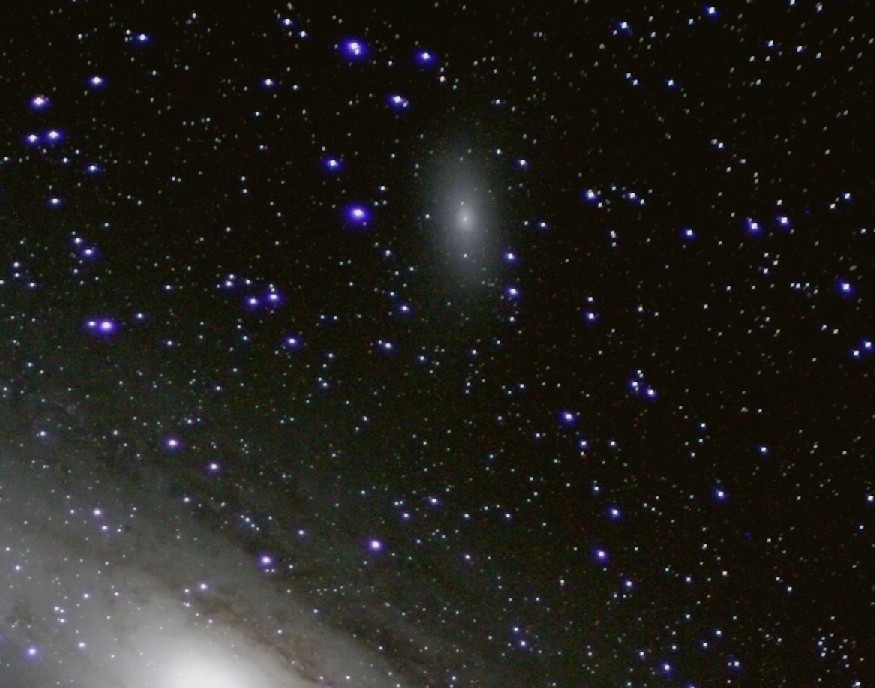
|
|
| M110 (NGC205) Companion to Andromeda Galaxy, A dwarf spheroidal galaxy |
|
The last object added (1966) to Messier's famous catalog of interesting deep space objects. There are 2 baby or satellite galaxies within the gravitational influence of Andromeda. They are known as M32 (sometimes named the Andromeda Nebula) and the M110 elliptical galaxy seen here. M110 is the larger and more diffuse elliptical galaxy. Eventually M110 will become part of Andromeda. It is thought that large galaxies like Andromeda and our Milky Way grew as big as they are by the absorption and incorporation of smaller galaxies like these. M110 is 2.9 million light years away, has a mass of 8-12 billion suns (Andromeda has about 125 billion), and apparent visual dimension of 17x10 arc minutes, and a visual magnitude of magnitude 8.5 Andromeda, the main galaxy, can be found from late August to early April, but the best time to look for it high in the sky in autumn. If you have a nice clear night, you can even see it with the unaided eye. Look to the Northeast and find Cassiopeia, the "W" in the Milky way. Look to the right and find the 4 bright stars that form the Great Square of Pegasus. Take the left hand corner star of the great square and count 2 bright stars back toward Cassiopeia, "star" number 3 is Andromeda. If you have any question whether you've spotted it, check it out with binoculars, it will then be unmistakable. Hope you find it :-) |
|
4" F5 refractor telescope
piggybacked on a LX200 Meade scope tracking scope,
Camera
Canon 300D at prime focus |